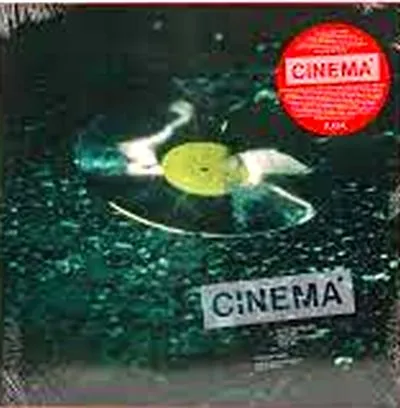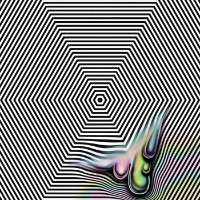- LP
- Recommended
- Back In
Cinema
Cinema
Discos Nada
- Cat No: ND 003
- updated:2025-04-23
軍事政権からの脱却へとすすんだブラジルの記念すべき年1985年にリリースされた演劇、ジャズ、電子音楽、ニューウェイヴ、アフリカン、ポリリズム、現代音楽等にインスパイアされ、視覚的な音を模索、提示した、実験的なブラジル音楽の秘宝。MUSIC FROM MEMORYのオブスキュア・ブラジル音楽コンピの金字塔「Outro Tempo」の第1弾にも収録された「Sem Teto」含む音源。
Track List
-
1. Falando Alto
-
2. No Dia Em Que Partiram
-
3. A Lua, As Estrelas
-
4. Não Imagino
-
5. Lá Dentro
-
6. Peixe Pedra
-
7. Amor Platônico
-
8. Conversa (Bonus Track)
-
9. Intervalo
-
10. Ciência
-
11. Ar De Amor
-
12. Sem Teto
-
13. O Poeta
-
14. Sp5 4r (Base)
-
15. Pallazo Uno (Bonus Track)
『1985年は、20年以上続いた軍事独裁政権から解放された、ブラジルの近現代史の中でも最も重要な年でした。若者が主導権を握り、ついにブラジルはRock In Rioフェスティバルで世界のショービジネス界に参入しました。しかし、本当の革命はアンダーグラウンドで起きていて、このレコードはその証拠だと思います。
その責任者の一人が、リオデジャネイロ出身の音楽家、作曲家、詩人、作家、脚本家、講演家のロナウド・タパジョスで、彼は常に実験的で前衛的な音楽に関わっていました。彼の軌跡は神話的な1968年に始まります。デュオ「Rô and Carlinhos」の一員として、「O Gigante」という曲を含む象徴的なシングルをリリースしました。
シネマ」は、1985年初頭に発表された実験的でアバンギャルドな作品である。様々な意味で、軍事独裁政権下の21年間の暗黒の時代を経て再出発した新しいブラジルを象徴する作品である。音楽的には、アコースティックな音と合成音をミックスした、ブラジル音楽のパイオニア的なアルバムである。
このブラジル音楽の希有な冒険は、1985年にアーティスト自身が資金を出し合って独立してリリースされた。オリジナルのスモールプレスは完売し、今では世界中のレコードコレクターの手に渡っています。今回は、数十年ぶりに発見された未発表曲2曲を加えて、初めてレコードとして再発売されます。
オリジナルのテープからリマスターされたこのリイシューには、オリジナルのグラフィック・アートの再現、プロジェクトの4人のメンバーによる新しい証言、ブラジルのアンダーグラウンドで作られた大胆で大胆不敵な音楽を調査した書籍シリーズ「Lindo Sonho Delirante」の著者であるBento Araujoのサイン入り長文記事が含まれています。
Cinema's LPのプレスリリースによると "シネマのLPのプレスリリースによると、「ビジュアル・ミュージックの時代に、シネマはサウンドである」とのこと。サウンド面では、このアルバムを聴くと、当時(1983年~1984年)利用可能だったテクノロジーと、より有機的な楽器との関係がどのように起こったのか、シンセサイザー/エフェクトとパーカッション、木管楽器、ピアノ、クラリネットとの二面性を理解しようとする興味深い苦悩の中に飛び込んでいくような感じがします。言い換えれば、シンセサイザーとアコースティックの共存はどうだったのか?このパラドックスは、世界中の80年代のブラジル音楽のコレクター、DJ、愛好家を魅了しているようです。
この架空のサウンドトラックは、アフロ・ブラジル・パーカッションやコンセプチュアル・シンセポップの陽気なパターンの上に、ダークでアンビエントな音楽の霧が主張しているかのような、暗い雰囲気を持っています。』
www.DeepL.com/Translator
その責任者の一人が、リオデジャネイロ出身の音楽家、作曲家、詩人、作家、脚本家、講演家のロナウド・タパジョスで、彼は常に実験的で前衛的な音楽に関わっていました。彼の軌跡は神話的な1968年に始まります。デュオ「Rô and Carlinhos」の一員として、「O Gigante」という曲を含む象徴的なシングルをリリースしました。
シネマ」は、1985年初頭に発表された実験的でアバンギャルドな作品である。様々な意味で、軍事独裁政権下の21年間の暗黒の時代を経て再出発した新しいブラジルを象徴する作品である。音楽的には、アコースティックな音と合成音をミックスした、ブラジル音楽のパイオニア的なアルバムである。
このブラジル音楽の希有な冒険は、1985年にアーティスト自身が資金を出し合って独立してリリースされた。オリジナルのスモールプレスは完売し、今では世界中のレコードコレクターの手に渡っています。今回は、数十年ぶりに発見された未発表曲2曲を加えて、初めてレコードとして再発売されます。
オリジナルのテープからリマスターされたこのリイシューには、オリジナルのグラフィック・アートの再現、プロジェクトの4人のメンバーによる新しい証言、ブラジルのアンダーグラウンドで作られた大胆で大胆不敵な音楽を調査した書籍シリーズ「Lindo Sonho Delirante」の著者であるBento Araujoのサイン入り長文記事が含まれています。
Cinema's LPのプレスリリースによると "シネマのLPのプレスリリースによると、「ビジュアル・ミュージックの時代に、シネマはサウンドである」とのこと。サウンド面では、このアルバムを聴くと、当時(1983年~1984年)利用可能だったテクノロジーと、より有機的な楽器との関係がどのように起こったのか、シンセサイザー/エフェクトとパーカッション、木管楽器、ピアノ、クラリネットとの二面性を理解しようとする興味深い苦悩の中に飛び込んでいくような感じがします。言い換えれば、シンセサイザーとアコースティックの共存はどうだったのか?このパラドックスは、世界中の80年代のブラジル音楽のコレクター、DJ、愛好家を魅了しているようです。
この架空のサウンドトラックは、アフロ・ブラジル・パーカッションやコンセプチュアル・シンセポップの陽気なパターンの上に、ダークでアンビエントな音楽の霧が主張しているかのような、暗い雰囲気を持っています。』
www.DeepL.com/Translator
1985 was one of the most important years in Brazil's recent history, when the country was freed from more than 20 years of military dictatorship. The youth took the lead and finally Brazil entered the world show business circuit with Rock In Rio festival. But the real revolution was happening in the underground and this record is a proof of that.
One of the people in charge was the musician, composer, poet, writer, scriptwriter and speaker from Rio de Janeiro Ronaldo Tapajós, who was always involved with experimental and avant-garde music. His trajectory begins in the mythical 1968, when, as part of the the duo Rô and Carlinhos, he released an emblematic single containing the song “O Gigante” - perhaps the first Brazilian bad trip recorded on vinyl and a shrewd criticism of the society's “square” habits.
Cinema was an experimental and avant-garde piece released in early 1985. In many ways it’s an example of the new Brazil that was reborning after 21 years of darkness under Military Dictatorship. Musically, it was a pioneer album for Brazilian music, mixing acoustic and synthetic sounds.
This rare adventure in Brazilian music was released independently in 1985, financed by the artists themselves. The original small press sold-out, belonging now to record collectors around the planet. For the first time Cinema is re-released on vinyl, with two extra and unreleased tracks found after decades.
Remastered from the original tapes, this reissue includes reproduction of the original graphic art, new testimonials from the four members of the project and a long article signed by Bento Araujo, author of the book series Lindo Sonho Delirante, which investigates audacious and fearless music created in the Brazilian underground.
According to Cinema’s LP press release: “in the era of visual music, Cinema is sound”. In terms of sound, listening to this album feels like diving into an intriguing anguish of trying to understand how the relationship between technology available at that time (1983-1984) and the more organic instruments happened, this duality between synthesizers/effects with percussion, woodwind instruments, piano and clarinet. In other words: how was the coexistence between the synthetic and the acoustic? This paradox seems to seduce collectors, DJs and enthusiasts of Brazilian music from the 80's around the world.
This fictional soundtrack has a dark mood, as if a fog of dark and ambient music insisted on staying on top of cheerful patterns of Afro-Brazilian percussion, or conceptual synth pop.
One of the people in charge was the musician, composer, poet, writer, scriptwriter and speaker from Rio de Janeiro Ronaldo Tapajós, who was always involved with experimental and avant-garde music. His trajectory begins in the mythical 1968, when, as part of the the duo Rô and Carlinhos, he released an emblematic single containing the song “O Gigante” - perhaps the first Brazilian bad trip recorded on vinyl and a shrewd criticism of the society's “square” habits.
Cinema was an experimental and avant-garde piece released in early 1985. In many ways it’s an example of the new Brazil that was reborning after 21 years of darkness under Military Dictatorship. Musically, it was a pioneer album for Brazilian music, mixing acoustic and synthetic sounds.
This rare adventure in Brazilian music was released independently in 1985, financed by the artists themselves. The original small press sold-out, belonging now to record collectors around the planet. For the first time Cinema is re-released on vinyl, with two extra and unreleased tracks found after decades.
Remastered from the original tapes, this reissue includes reproduction of the original graphic art, new testimonials from the four members of the project and a long article signed by Bento Araujo, author of the book series Lindo Sonho Delirante, which investigates audacious and fearless music created in the Brazilian underground.
According to Cinema’s LP press release: “in the era of visual music, Cinema is sound”. In terms of sound, listening to this album feels like diving into an intriguing anguish of trying to understand how the relationship between technology available at that time (1983-1984) and the more organic instruments happened, this duality between synthesizers/effects with percussion, woodwind instruments, piano and clarinet. In other words: how was the coexistence between the synthetic and the acoustic? This paradox seems to seduce collectors, DJs and enthusiasts of Brazilian music from the 80's around the world.
This fictional soundtrack has a dark mood, as if a fog of dark and ambient music insisted on staying on top of cheerful patterns of Afro-Brazilian percussion, or conceptual synth pop.




ブラジルのポスト・パンク、ニューウェイヴの素晴らしい発掘を行ってきたブラジル、サンパウロのレーベル〈NADA NADA DISCOS〉がスタートしたサブレーベル〈DISCOS NADA〉からの再発。現代演劇のフィールドに携わった、作曲家、詩人、作家、脚本家、講演家のRonaldo Tapajós、女優で演劇の理論家、研究者でもあるAnnabel Albernazも参加しています。80s ブラジル音楽の深部から素晴らしい一枚。ストックしました! (サイトウ)